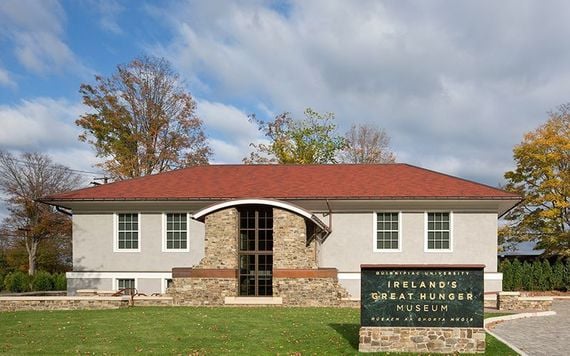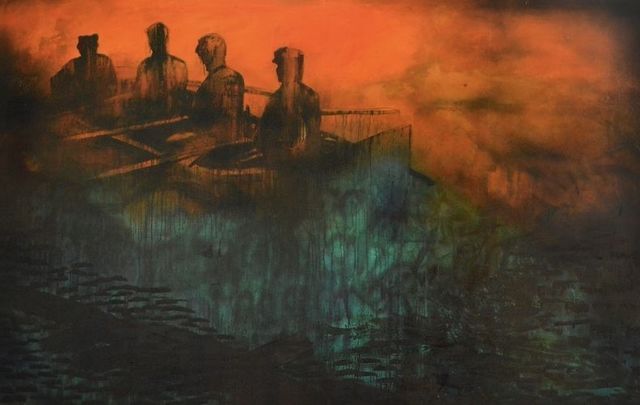A committee organized to save Ireland’s Great Hunger Museum at Quinnipiac University in Connecticut, and more specifically its valuable contents has asked the state’s attorney general to investigate the museum’s closure.
Connecticut's Attorney General William Tong has been asked to investigate the permanent closure of Ireland’s Great Hunger Museum at Quinnipiac University by a growing group of concerned Irish Americans and donors who want to ensure that the museum’s valuable and historical collection remains intact.
Michael McCabe, an attorney acting on behalf of the Committee to Save Ireland’s Great Hunger Museum, sent a letter on September 30 to Tong asking for his office to “investigate” the closure, “as it involves selling or disbursing Ireland’s Great Hunger Collection, the property of a non-profit, 501(c)(3) institution. Furthermore, donors want to know what happens to their gifts of artwork and money to a museum that is now closed.
“The committee,” the letter adds, “respectfully requests that your office look into this matter as it is in the public interest to stop any sale or breakup of the collection.”
Read more
The benefactors who gave works of art to the museum are “extremely, extremely” upset by the decision of Quinnipiac President Judy Olian to keep the museum closed for good, sources told the Irish Voice, and want answers about what will happen to their donations. The museum, which opened in 2012 under the leadership of former university president Dr. John Lahey, houses the world’s biggest collection of Irish Famine art.
The GAA in Connecticut will soon announce its “Day of Action for Ireland’s Great Hunger Museum” in Hamden, where the museum is located, in order to draw more attention to the closure. It is expected to take place on Saturday, October 30 with music, Irish dancing, and activities for children.

Ireland’s Great Hunger Museum at Quinnipiac University in Connecticut.
The anger over Olian’s decision to shut the museum hasn’t gone unnoticed by the university’s student newspaper, The Quinnipiac Chronicle, which has published articles critical of her stance towards the museum.
“Francis McCarthy, a former public safety officer at Quinnipiac who was assigned to work full time at the museum since it opened in 2012, said the operation of the museum changed after Olian started her tenure. The free admission arranged by John Lahey — as a learning experience for all — ended, McCarthy said. Admission fees were charged for adults,” the newspaper reported last month.
Another museum volunteer, Mary Noonan Cortright, told the paper, “Since Quinnipiac doesn’t seem to realize the far-reaching impact Ireland’s Great Hunger Museum has had and the asset that it is to the present and future of the university, I do hope that another university will purchase it and continue the fine work that has begun telling the human story.”
In an opinion piece, the Chronicle published on September 24, Hamden resident Joseph McDonagh described the museum as a memorial to all ethnicities that experienced starvation.
“It is too simplistic to view Ireland’s Great Hunger Museum as an art museum; it is – as was intended from the outset by donor and benefactor Murray Lender and President Lahey – a memorial…for the university to destroy this memorial is an insult, first to the Irish, but also to anyone who cares about injustice and suffering,” he wrote.
Read more
In August, the university announced that the museum, which closed its doors to in-person visitors at the start of the pandemic, would permanently shut because the operating costs exceed the money it takes in. A committee of Irish Americans formed in the weeks after with a mission to keep the museum’s valuable and historic content intact if Quinnipiac sticks by the decision to keep the doors closed.
“Our deepest concern is what will happen to the collection and its power to communicate this global tragedy. The museum is not simply a collection of artifacts but a historical narrative. We are told that you are in ‘active conversations’ with potential partners, but will the collection be broken up?” the Committee to Save Ireland’s Great Hunger Museum wrote to Olian and the university’s Board of Trustees last month.

Love Irish history? Share your favorite stories with other history buffs in the IrishCentral History Facebook group.




Comments